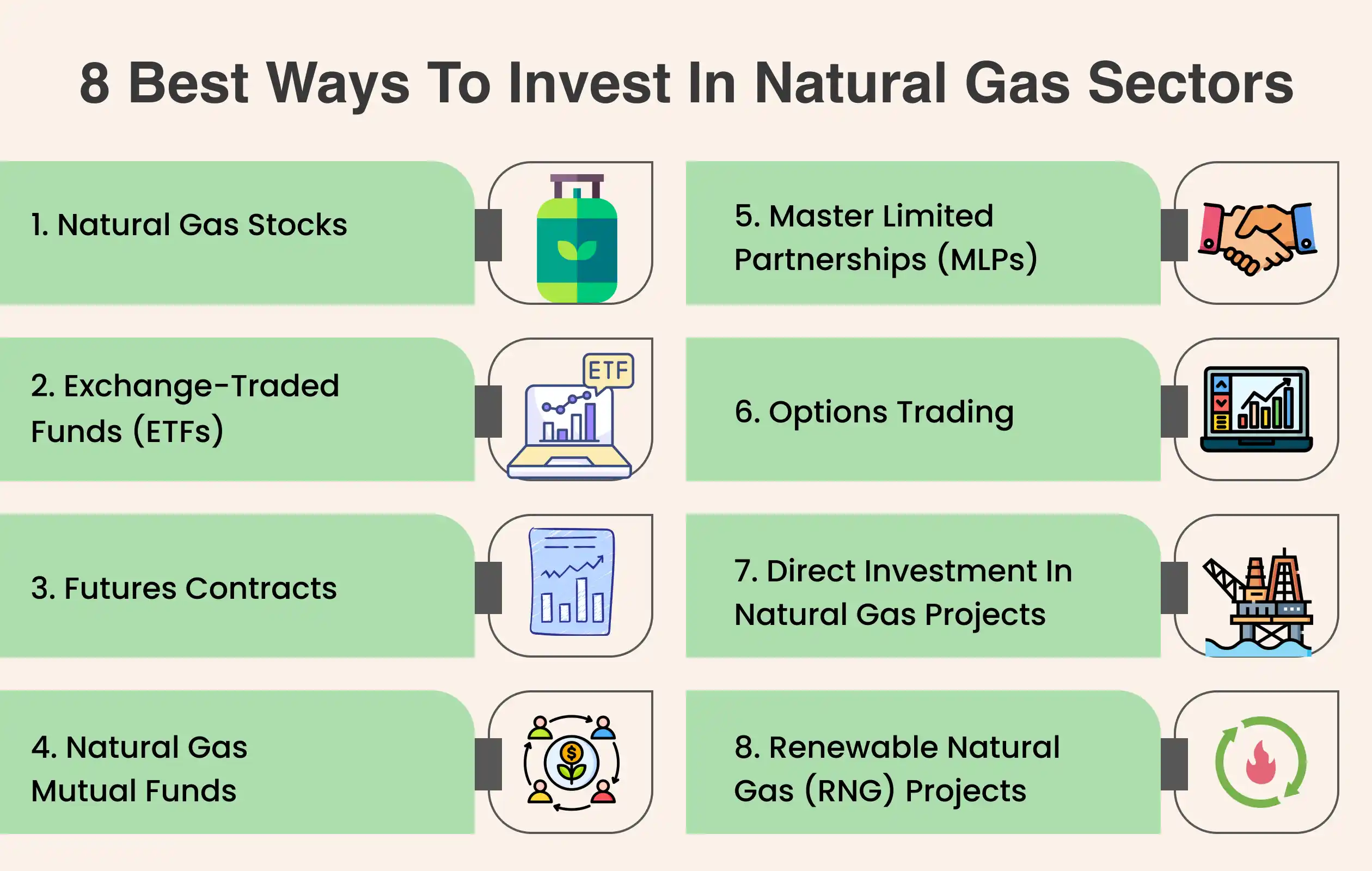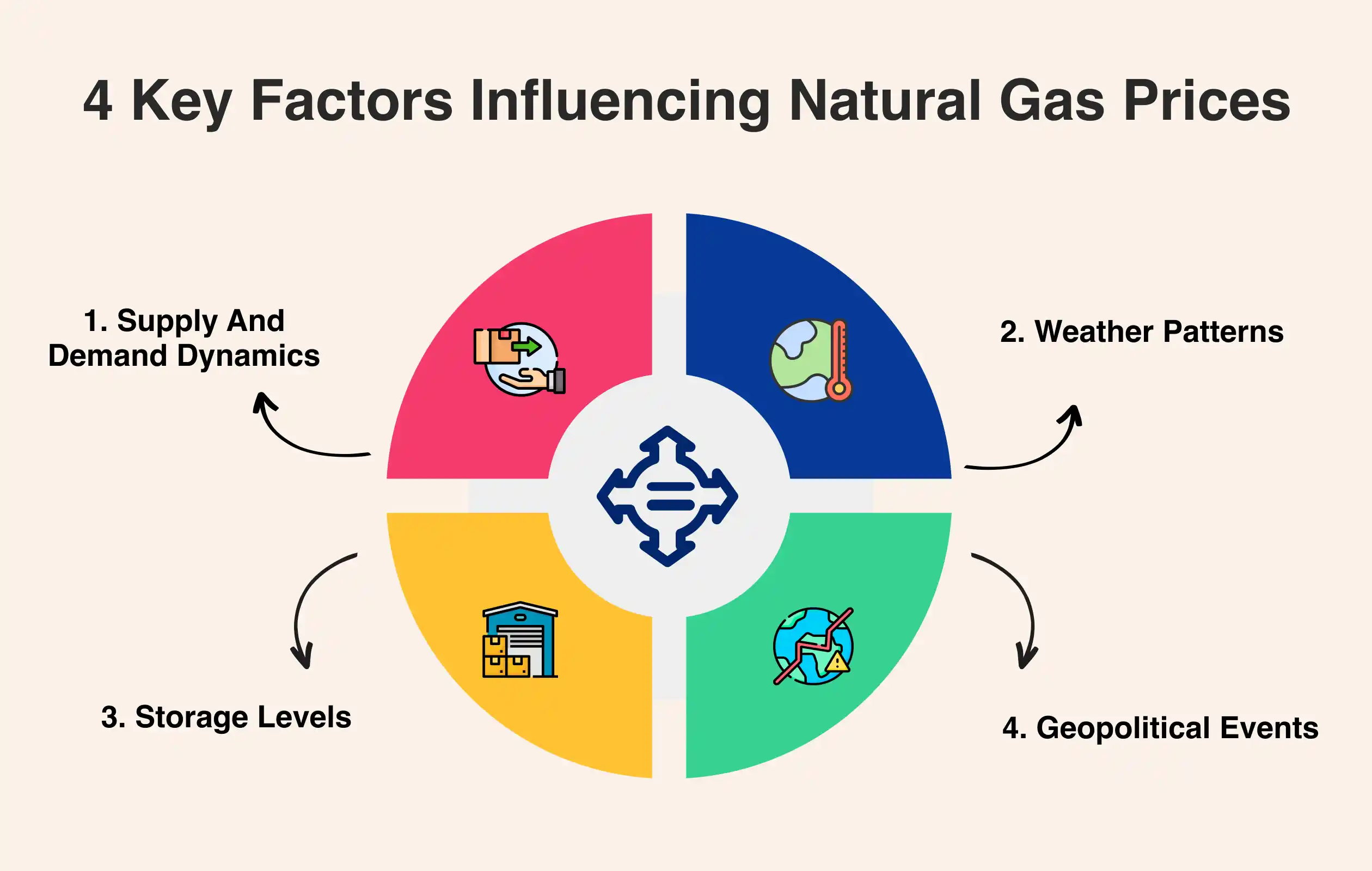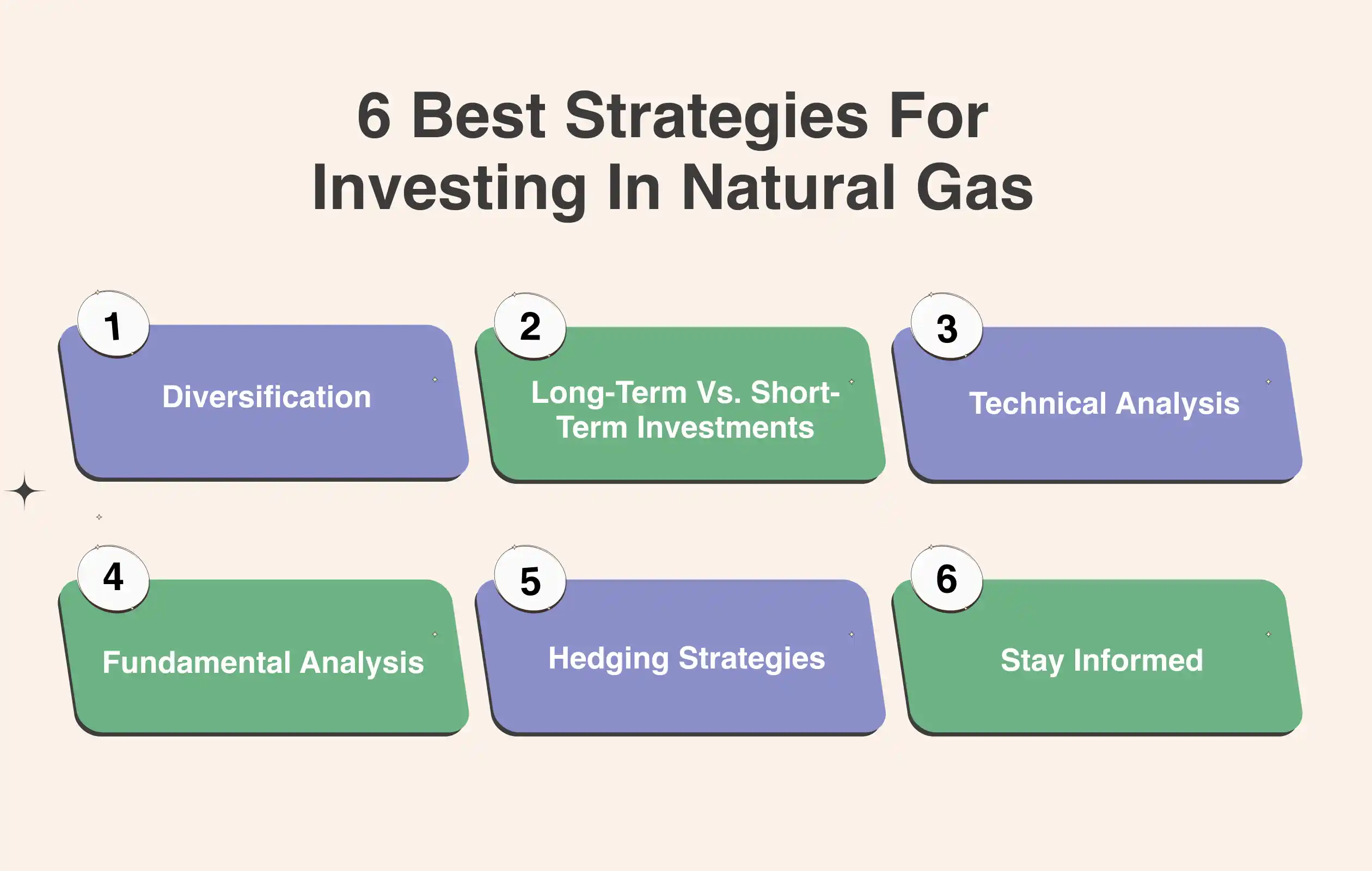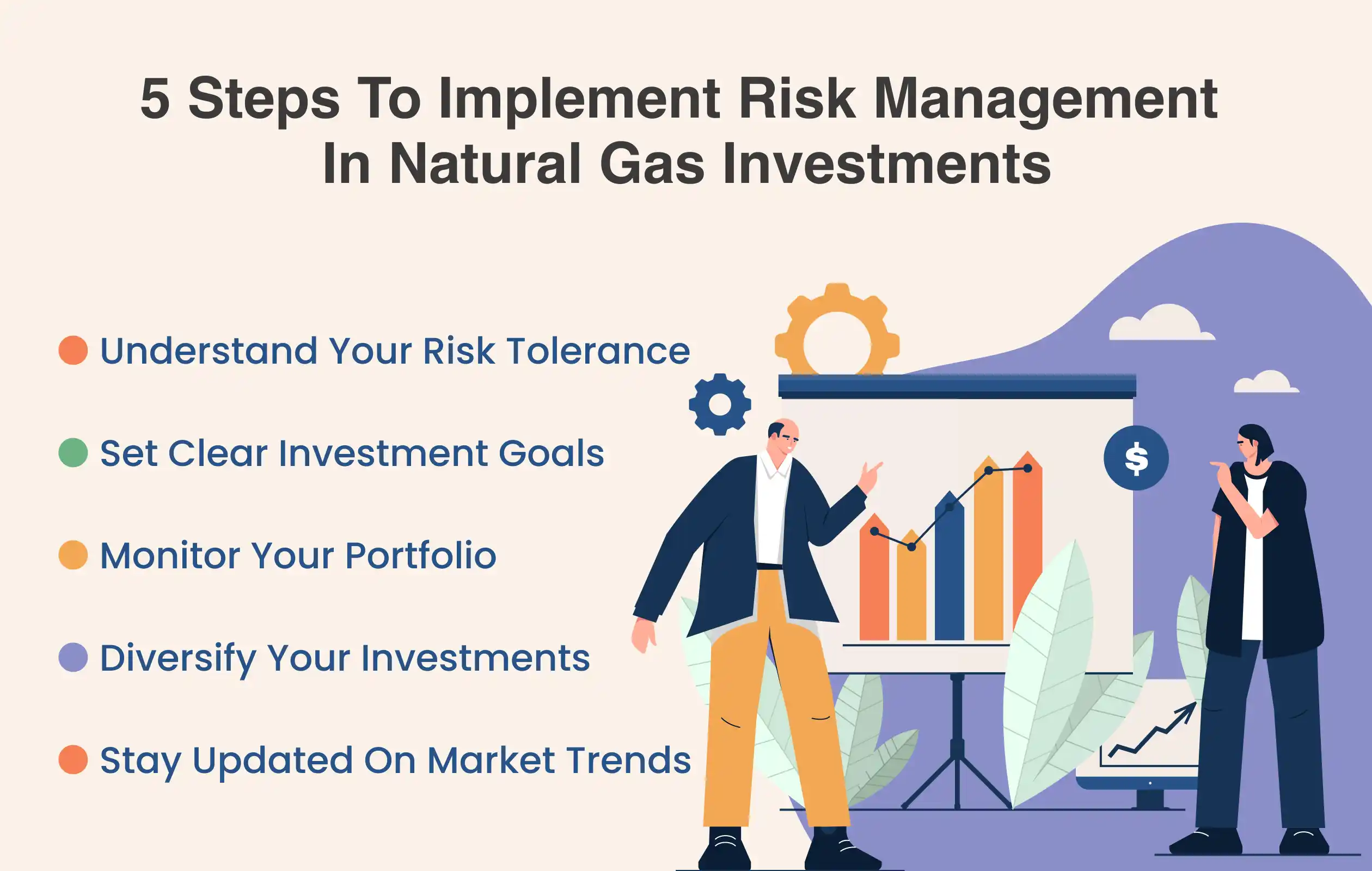Strategies for Investing in the Natural Gas Sector: Navigating Market Fluctuations

Investing in the natural gas sector can be both profitable and challenging due to the ups and downs of the commodity market. It is a key energy source worldwide, and its prices can change quickly because of various factors. Understanding and navigating these market fluctuations requires strategic planning and a good grasp of the sector.
Understanding the Natural Gas Market
Natural gas is important for generating electricity, heating homes, and as a raw material in industries. It is part of the broader commodity market, where things like oil, coal, and metals are bought and sold. Unlike other commodities, Its prices can be very unpredictable because they are affected by seasonal changes in demand and storage levels.
Volatile Nature of Natural Gas:
The natural gas market is very unpredictable and prices can change quickly. This is because many things can affect it, like the weather, with cold winters and hot summers increasing demand for heating and cooling. Supply can be disrupted by political issues, natural disasters, or problems with extracting the gas. New rules and better technology also change how much gas is available and needed. Because of all these factors, investing in natural gas can be tricky but also offers big opportunities, so it’s important to be well-informed and have a good strategy.
8 Best Ways to Invest in Natural Gas Sectors

1. Natural Gas Stocks:
Invest in companies involved in the exploration, production, and distribution of natural gas.
2. Exchange-Traded Funds (ETFs):
ETFs offer diversified investments in multiple natural gas companies.
3. Futures Contracts:
Buy or sell natural gas at a predetermined price for future delivery, though it carries a higher risk.
4. Natural Gas Mutual Funds:
Professionally managed funds that invest in a portfolio of natural gas-related assets.
5. Master Limited Partnerships (MLPs):
Invest in companies that operate pipelines and infrastructure, often providing high yields.
6. Options Trading:
Gain the right to buy or sell natural gas at a specific price within a set timeframe.
7. Direct Investment in Natural Gas Projects:
Invest directly in drilling and production projects, offering high returns but requiring significant capital.
8. Renewable Natural Gas (RNG) Projects:
Invest in companies producing RNG from waste materials, aligned with sustainable energy trends.
4 Key Factors Influencing Natural Gas Prices

1. Supply and Demand Dynamics:
The balance between how much natural gas is available (supply) and how much people want to use (demand) is a major factor in natural gas prices. When demand is more than supply then prices go up. When supply is more than demand then prices go down. Supply can be affected by how much is produced, advances in extraction technology, and political stability in producing areas. Weather, economic growth, and the use of natural gas to generate electricity all have an impact on demand.
2. Weather Patterns:
Weather greatly impacts natural gas prices. Cold winters increase the need for heating, which drives up prices. Mild winters lower the demand for heating, which can reduce prices. Hot summers can increase the demand for natural gas to power air conditioning, affecting prices as well. Keeping an eye on weather forecasts and seasonal trends is crucial for investors.
3. Storage Levels:
Natural gas storage acts as a safety net to balance supply and demand. High storage levels usually mean there is more supply than demand, leading to lower prices. Low storage levels can indicate potential shortages and higher prices. Monitoring storage reports, like those released weekly by the U.S. Energy Information Administration (EIA) provides useful information about market circumstances.
4. Geopolitical Events:
Political issues in major natural gas-producing regions can disrupt supplies and impact prices. For example, conflicts in the Middle East or sanctions on countries like Russia can create uncertainties and cause prices to spike.
6 Best Strategies for Investing in Natural Gas

1. Diversification:
One basic strategy in the commodity market is diversification. By spreading investments across different assets within the natural gas sector, like stocks of natural gas companies, exchange-traded funds (ETFs), and futures contracts, investors can reduce risks linked to price volatility. Diversifying helps to buffer against the unpredictable nature of commodity prices.
2. Long-Term vs. Short-Term Investments:
Deciding between a long-term or short-term investment strategy is important. Long-term investors might focus on stocks of strong, growing natural gas companies. Short-term traders might take advantage of price swings through futures contracts or options trading. This approach helps in leveraging the fluctuations in natural gas prices and commodity prices effectively.
3. Technical Analysis:
Using technical analysis tools helps investors make decisions based on price patterns and market trends. Techniques like moving averages, relative strength index (RSI), and Bollinger Bands can provide clues about possible price movements and when to buy or sell. This is particularly useful in the commodity market, where natural gas prices can be highly volatile.
4. Fundamental Analysis:
Along with technical analysis, fundamental analysis is crucial. Looking at the financial health, production abilities, and market position of natural gas companies can help find undervalued stocks with growth potential. Key factors to consider include earnings reports, production forecasts, and reserve estimates. Analyzing these fundamentals can provide insights into future commodity prices.
5. Hedging Strategies:
To manage risks from price volatility, investors can use hedging strategies. Futures contracts, options, and swaps are common tools to protect against unfavorable price changes. For example, buying put options can guard against potential declines in natural gas prices. Hedging is a common practice in the commodity market to stabilize returns despite fluctuating commodity prices.
6. Stay Informed:
Keeping up with the latest news and developments in the natural gas sector is essential. Subscribing to industry reports, following relevant news sources, and joining sector-specific forums can provide valuable information and help anticipate market shifts. Staying informed about changes in commodity prices and the overall commodity market is key to making smart investment decisions.
The Role of Technology in Natural Gas Investments
Advances in technology have greatly impacted the natural gas sector, affecting both production and trading. Hydraulic fracturing (fracking) and horizontal drilling have changed natural gas extraction, increasing supply and influencing commodity prices. Also, digital platforms and trading algorithms have transformed how investors engage with the commodity market.
Old technologies used in natural gas investments often lacked precision in pricing and the ability to adapt quickly to market changes. Traditional methods of price prediction and market analysis were often slow and reactive, leading to missed opportunities and higher risks.
AI and ML-Based Price Forecasting Tools:
Future price prediction tools like PriceVision, which use AI and ML-based commodity price forecasting, are revolutionizing how investors approach the natural gas market. These advanced tools analyze vast datasets to identify trends and predict price movements with greater accuracy. By leveraging AI and ML, investors can gain insights into future price fluctuations, helping them make more informed decisions and reduce investment risks.
Environmental and Regulatory Considerations
Investors in the natural gas sector must also think about environmental and regulatory factors. The shift to renewable energy sources and increasing regulation of fossil fuels can impact the natural gas market.
1. Renewable Energy Transition:
The global move towards renewable energy sources like wind and solar presents both challenges and opportunities for the natural gas sector. While natural gas is seen as cleaner than coal and oil, the long-term trend toward green energy could affect demand. Investors should consider how natural gas companies are adapting to the changing energy landscape and its impact on commodity prices.
2. Regulatory Policies:
Government policies and regulations are significant in shaping the natural gas market. Carbon pricing, emissions regulations, and subsidies for renewable energy can influence natural gas prices and investment opportunities. Staying updated on regulatory developments and their potential impacts on the commodity market is crucial for investors.
5 Steps to Implement Risk Management in Natural Gas Investments
Effective risk management is crucial when investing in the natural gas sector, given the inherent volatility of commodity prices.

1. Understand Your Risk Tolerance:
Assessing your risk tolerance is the first step in managing investment risk. Understanding how much risk you are willing to take on can help you make more informed decisions and avoid emotional reactions to market fluctuations.
2. Set Clear Investment Goals:
Having clear investment goals helps in aligning your strategies with your risk tolerance. Whether your goal is short-term gains or long-term growth, knowing what you aim to achieve can guide your investment choices and risk management practices.
3. Monitor Your Portfolio:
Regularly reviewing your investment portfolio helps you stay on top of market changes and adjust your strategies as needed. Keeping track of how your investments are performing allows you to make timely decisions to minimize risks and capitalize on opportunities.
4. Diversify Your Investments:
Diversification is a key strategy for managing risk. By spreading your investments across various assets within the natural gas sector, you can mitigate the impact of price volatility on your overall portfolio.
5. Stay Updated on Market Trends:
Keeping up with the market trends and news is essential for making informed investment decisions. By staying informed about industry developments, regulatory changes, and geopolitical events, you can better anticipate market movements and manage risks effectively.
Conclusion
Investing in the natural gas sector requires a strategic approach to handle the natural ups and downs of the commodity market. By understanding the key factors influencing natural gas prices, using diversified investment strategies, leveraging technological advancements, and considering environmental and regulatory factors, investors can increase their chances of success. Staying informed and adaptable is key in this dynamic market, where fluctuations in commodity prices are normal.
In summary, the natural gas sector offers significant investment opportunities but also demands careful analysis and strategic planning. By combining long-term and short-term strategies, using both technical and fundamental analysis, and staying on top of market developments, investors can effectively navigate the complexities of the natural gas market. Keeping a close watch on natural gas prices, commodity prices, and the overall trends in the commodity market will help investors make informed and profitable decisions.
FAQs
1. What are the primary factors affecting natural gas prices?
The main factors influencing natural gas prices in the commodity market include supply and demand dynamics, weather patterns, storage levels, and geopolitical events. These factors can cause significant fluctuations in natural gas prices.
2. How can I mitigate risks when investing in the natural gas sector?
To mitigate risks when investing in the natural gas sector, you can diversify your investments across various assets like natural gas company stocks, ETFs, and futures contracts. Employing hedging strategies, such as using options and futures contracts, can also protect against unfavorable price changes.
3. How do environmental and regulatory factors impact natural gas investments?
Environmental and regulatory factors, such as the shift towards renewable energy and strict emissions regulations, can significantly impact natural gas investments. These factors can affect demand and influence commodity prices.